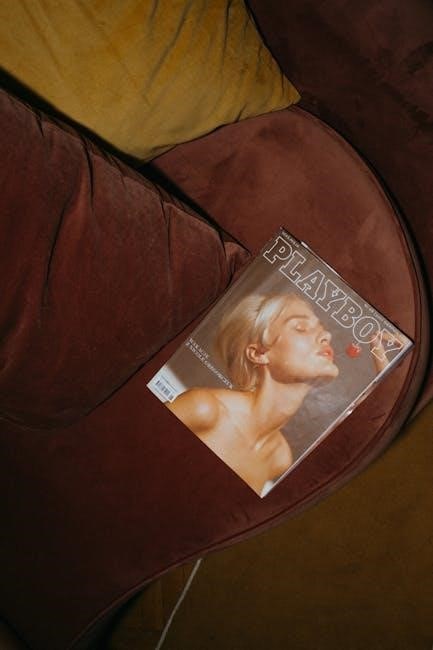Jung und Frei Magazine: An Overview
Jung und Frei, sometimes written Jung & Frei, was a German FKK magazine sold freely at kiosks. It often featured content involving children and young people. Some issues are now considered objectionable material.
Definition and Context of Jung und Frei
Jung und Frei was a German magazine associated with the Freikörperkultur (FKK) movement. These magazines, including Jung und Frei, often featured nude or seminude images, sometimes including children and families. The publication aimed to promote a natural and uninhibited lifestyle, aligned with the principles of naturism. Issues of Jung und Frei were once openly sold in Germany. This magazine provided a platform for articles and images related to nude bathing, travel, and family-oriented nudist activities, reflecting the broader themes of freedom and youth embraced by the FKK culture. Some back issues are available online.

Historical Significance
Jung und Frei played a role in the FKK movement by showcasing images and articles promoting naturism. It challenged societal norms and contributed to discussions around freedom, youth, and the body.
Role in the FKK Movement
Jung und Frei magazine served as a visual and textual proponent of the Freikörperkultur (FKK) movement, which advocated for social acceptance of nudism and nature. It helped normalize nudity within a specific cultural context, particularly within family settings. The magazine’s content, featuring images and articles related to naturism, contributed to the broader FKK movement by providing a platform for its ideals. Jung und Frei stimulated conversations about bodily freedom and challenged traditional norms. It visually promoted a lifestyle centered around outdoor activities and natural living, supporting the FKK philosophy.
Content and Themes
The magazine Jung und Frei primarily focused on family naturism, showcasing parents with their children. The images often portrayed a mix of generations enjoying nude recreation and outdoor activities together.
Focus on Family Naturism
Jung und Frei magazine prominently featured family-oriented content, presenting images of mothers and fathers with their children in naturist settings. These photographs often depicted various family activities, aiming to normalize nudity within the family context. The magazine showcased intergenerational interactions, emphasizing the comfort and acceptance of naturism across different age groups. By focusing on family naturism, Jung und Frei sought to promote a vision of nudism as a healthy and natural lifestyle choice for all family members, fostering a sense of openness and body positivity within the family unit and the broader naturist community.

Legal and Ethical Issues
The magazine Jung und Frei faced controversies and censorship due to its content featuring children. Authorities classified some issues as objectionable, raising ethical debates about child exploitation and appropriate media content.
Controversies and Censorship
Jung und Frei stirred significant controversies, primarily due to its focus on family naturism and depictions of children. Authorities and concerned groups raised objections, leading to censorship efforts and legal challenges. The magazine’s content sparked debates about child welfare, exploitation, and the boundaries of free expression. Some issues faced classification as “jugendgefährdend” (harmful to youth) in Germany, resulting in restrictions on their sale and distribution. These controversies highlight the complex interplay between artistic expression, societal norms, and the protection of children in media.
Classification as Objectionable Material
Certain issues of Jung und Frei faced official classification as “objectionable material” in some regions, including New Zealand. This classification stemmed from concerns over the depiction of nudity, particularly involving children, and the potential for exploitation. Such classifications led to restrictions on the magazine’s import, sale, and distribution. The determination of “objectionable” status reflects differing cultural and legal standards regarding nudity, child welfare, and freedom of expression. The specific criteria used to classify the magazine varied, but generally focused on the explicitness and perceived potential harm of the content.
Cultural Impact
Jung und Frei significantly influenced the nudist magazine landscape. It challenged norms and fostered a more inclusive understanding of beauty. The magazine also rewrote the narrative surrounding naturism in Germany.
Influence on Nudist Magazines
Jung und Frei, alongside Sonnenfreunde, left a mark on culture, rewriting the naturism narrative and challenging societal norms. These magazines encouraged inclusivity, redefining beauty beyond superficial standards. Jung und Frei became a platform for conversations around family naturism, influencing similar publications; The magazine provided a visual representation of naturist ideals, impacting the evolution of nudist magazines. It helped shape perceptions of the FKK movement, leaving its mark on similar publications that followed in its wake.

Collecting and Cataloging
Collecting Jung und Frei magazines involves managing a collection. LastDodo offers a catalog for managing issues. Specific issues’ value varies among collectors. Some see them as important historical artifacts.
Availability and Value of Issues
Finding Jung und Frei magazines can be challenging. Collectors often seek specific editions, influencing their value. Some issues are rarer, increasing their worth. Online platforms and specialized auctions are potential sources. LastDodo offers collection management; Prices vary widely based on condition, rarity, and content. Certain editions featuring particular photographers or models may command higher prices. The magazine’s historical context as part of the FKK movement also affects its collectibility. Consider the legal implications of owning certain issues, given their classification as objectionable material in some regions. Cataloging helps manage value.
Digital Presence and Archives
Online, Jung und Frei images are found on various platforms. Discussions about the magazine exist in collector communities. Availability of complete digital archives is limited due to copyright and legal concerns regarding objectionable material.
Online Images and Discussions
The digital footprint of Jung und Frei mainly consists of scattered images found across the internet. These images often appear on sites dedicated to vintage magazines, nudism, or adult content archives. Online forums and collector communities occasionally discuss the magazine’s content, history, and cultural impact, though these discussions are often tempered by legal and ethical considerations. The availability of complete, high-quality scans or comprehensive digital archives is limited. This scarcity is likely due to copyright issues, the magazine’s controversial nature, and efforts to prevent the distribution of potentially illegal content.
Related Publications
Jung und Frei can be compared to Sonnenfreunde, another German nudist magazine. Both magazines featured naturism, but differed in their target audiences and approach to the subject matter, and possible legal troubles.
Comparison with Sonnenfreunde
Jung und Frei is often compared to Sonnenfreunde, another German magazine exploring naturism. While both publications operated within the FKK (Freikörperkultur) movement, they presented different focuses. Sonnenfreunde, with its special editions, delved into sauna culture and the benefits of naked bathing. Some sources suggest that despite certain photographic choices, Jung und Frei and Sonnenfreunde special editions were not initially considered ethically disorienting or pornographic. Understanding their distinct editorial directions provides insight into the diverse landscape of naturist publications in Germany.

Learning German with Related Materials
Studying materials related to magazines like Jung und Frei can offer vocabulary related to family, leisure, and cultural trends. These resources can be integrated into language courses for advanced students.
Educational Resources and Vocabulary
Using magazines like Jung und Frei as supplementary material offers learners vocabulary related to everyday life, relationships, and cultural contexts. The language found within these publications provides a real-world perspective, enhancing language acquisition. Incorporating such material into lesson plans allows students to explore themes of family, recreation, and societal values. Exposure to authentic German text promotes reading comprehension and expands vocabulary. The inclusion of visual elements alongside the text aids understanding and provides a more engaging learning experience. These materials are useful resources for enhancing language skills.
Current Legal Status
The legality of materials like Jung und Frei varies by region. Check local regulations and restrictions before accessing or distributing related content. Some content might be classified as objectionable.
Legality and Regulations Today
The current legal status of Jung und Frei magazines is complex and varies significantly depending on jurisdiction. In Germany, the magazine faced legal challenges and was eventually deemed “jugendgefährdend” (harmful to minors), leading to its removal from open sale. Regulations regarding such materials are subject to change. Always consult local laws regarding possession, distribution, and access of such magazines. Online accessibility does not guarantee legality. Be aware of potential consequences related to accessing or distributing such content, and consider consulting legal counsel for clarification regarding specific regulations in your area.
